We’re all swimming in an unprecedented flow of information, thanks to the internet, AI, and social media. While these tools have broadened our access to knowledge, it’s also created an environment where disinformation thrives.
Disinformation – the deliberate spread of false or misleading information – is a threat to systems that rely on shared facts. Here are 20 everyday ways to counteract disinformation, and protect our nation’s fundamental democratic principles.
1. Educate yourself
Understand what disinformation is and how it spreads. Recognize common tactics, such as fake news, deepfakes, and manipulated images.
2. Verify, verify, verify
Before sharing or believing information, check its source and credibility. Fact-check using reliable fact-checking organizations like Snopes, FactCheck.org, and PolitiFact.
3. Cross-check sources
Don’t rely on a single source. Cross-reference information with multiple reputable sources to ensure accuracy. This is known as critical reading or reading horizontally.
4. Think critically
Be skeptical of sensational claims and clickbait headlines. Think critically and question the information’s validity – is the information simply trying to get a rise out of you? If so, that’s a big red flag.
5. Check dates
Make sure the information is up to date. Old information presented as current can be misleading. Most online articles have a published-on date – train yourself to look for it first, before consuming what’s below.
6. Champion media literacy
Encourage others to be media literate. Share resources and tips on identifying disinformation and misinformation. Support legislation that requires media literacy education in schools.
7. Report disinfo
If you come across disinformation, report it to the platform or website hosting the content, and use their reporting mechanisms. Be vigilant in this practice.
8. Pause before sharing
Avoid sharing information you haven’t verified. Even sharing with the intent of debunking can spread disinformation further. Social media sites make it easy to share, but just because we can doesn’t always mean we should.
9. Know who you can trust
Favor reputable news outlets and established institutions. They are far more likely to adhere to journalistic standards.
10. Push back constructively
If you encounter someone sharing disinformation, engage in a respectful and fact-based conversation. Share your sources and encourage critical thinking.
11. Support fact-checking organizations
Contribute to or support organizations that focus on fact-checking and investigative journalism.
12. Promote digital literacy
Encourage digital literacy in schools and communities to empower people to recognize and combat disinformation. Regularly share content on the topic in your digital circles.
13. Check your biases
Be aware of your own biases and how they might influence your perception of information. Like information that is designed to enrage or agitate you, information presented to harden our biases leads to rigid, uncritical thinking.
14. Use technology
Utilize browser extensions and apps designed to detect and flag disinformation and fake news.
15. Promote transparency
Support efforts for more transparency in online content and advertising. Encourage social media platforms to label or limit the spread of false information.
16. Be accountable
Encourage individuals and organizations to take responsibility for the information they share and consume. Accountability builds back trust, and trust can lead to greater understanding.
17. Practice what you preach
Share accurate information and be a role model for responsible information sharing.



